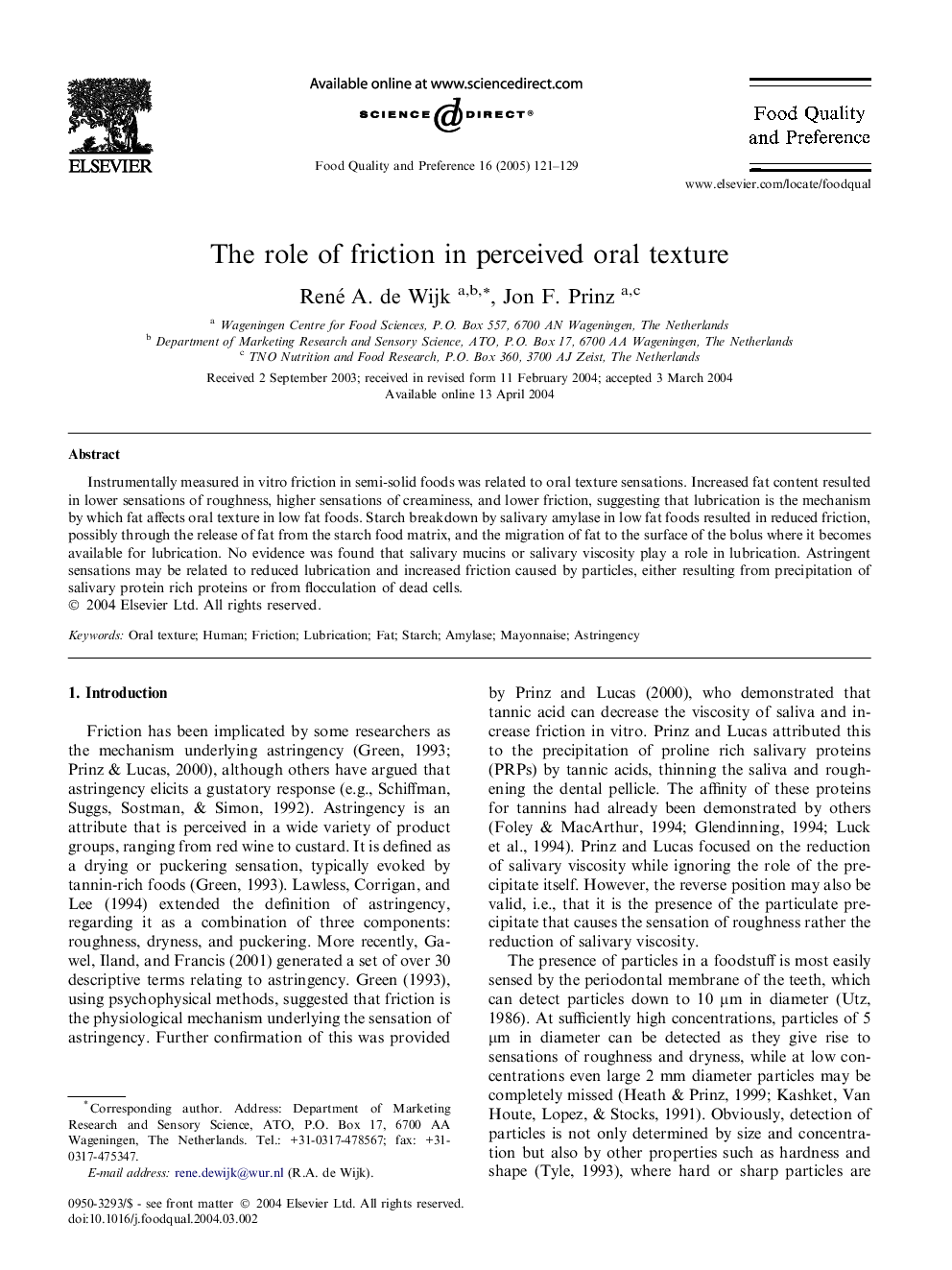| Article ID | Journal | Published Year | Pages | File Type |
|---|---|---|---|---|
| 9409051 | Food Quality and Preference | 2005 | 9 Pages |
Abstract
Instrumentally measured in vitro friction in semi-solid foods was related to oral texture sensations. Increased fat content resulted in lower sensations of roughness, higher sensations of creaminess, and lower friction, suggesting that lubrication is the mechanism by which fat affects oral texture in low fat foods. Starch breakdown by salivary amylase in low fat foods resulted in reduced friction, possibly through the release of fat from the starch food matrix, and the migration of fat to the surface of the bolus where it becomes available for lubrication. No evidence was found that salivary mucins or salivary viscosity play a role in lubrication. Astringent sensations may be related to reduced lubrication and increased friction caused by particles, either resulting from precipitation of salivary protein rich proteins or from flocculation of dead cells.
Related Topics
Life Sciences
Agricultural and Biological Sciences
Food Science
Authors
René A. de Wijk, Jon F. Prinz,
